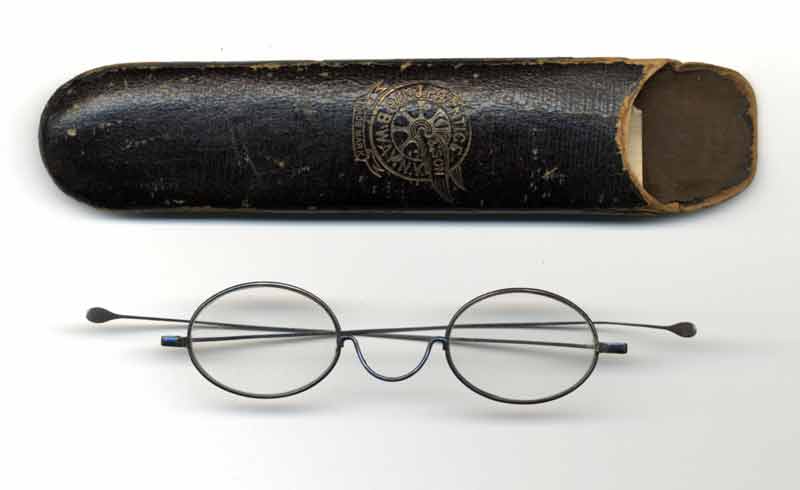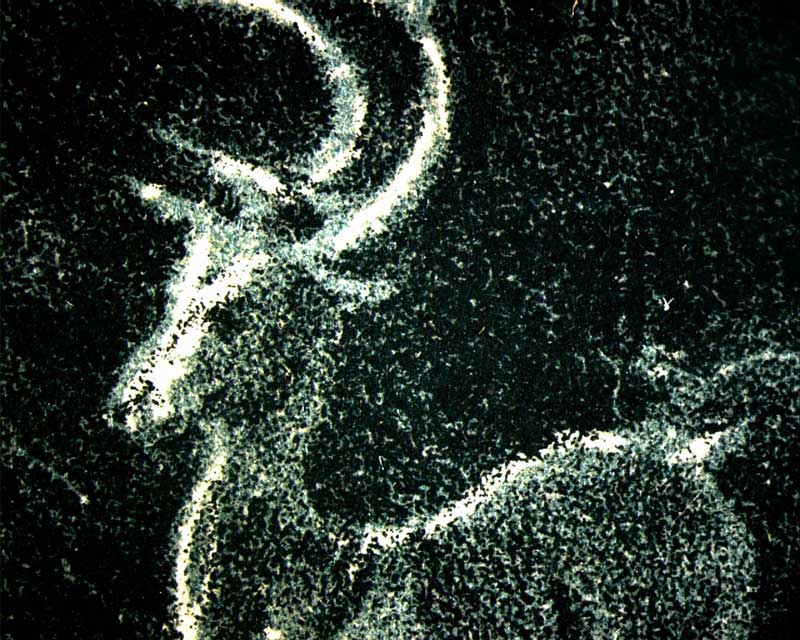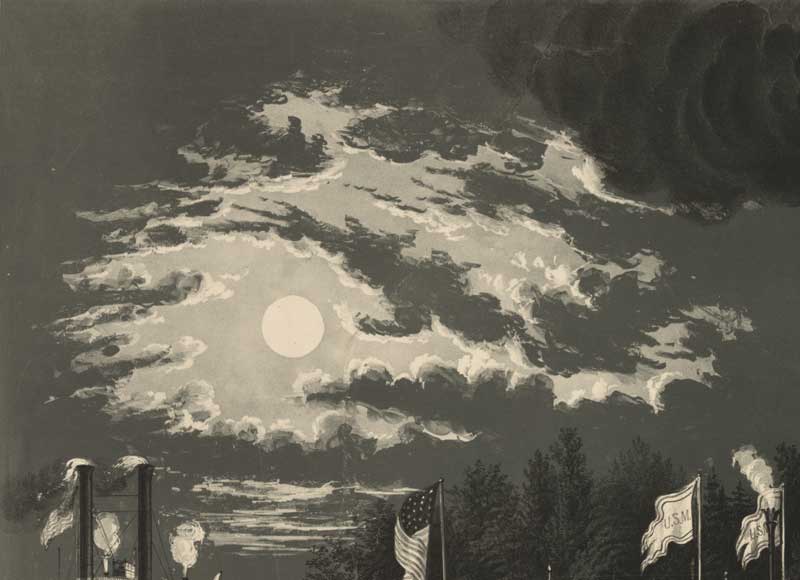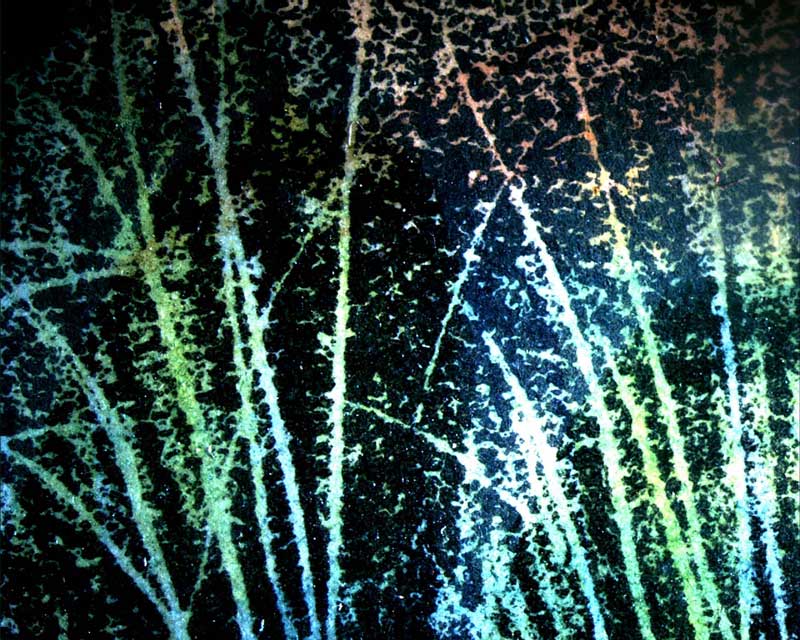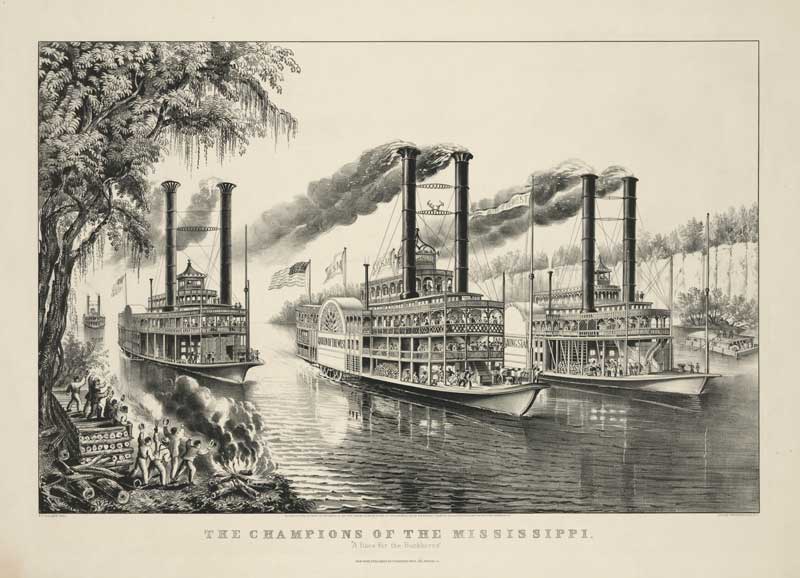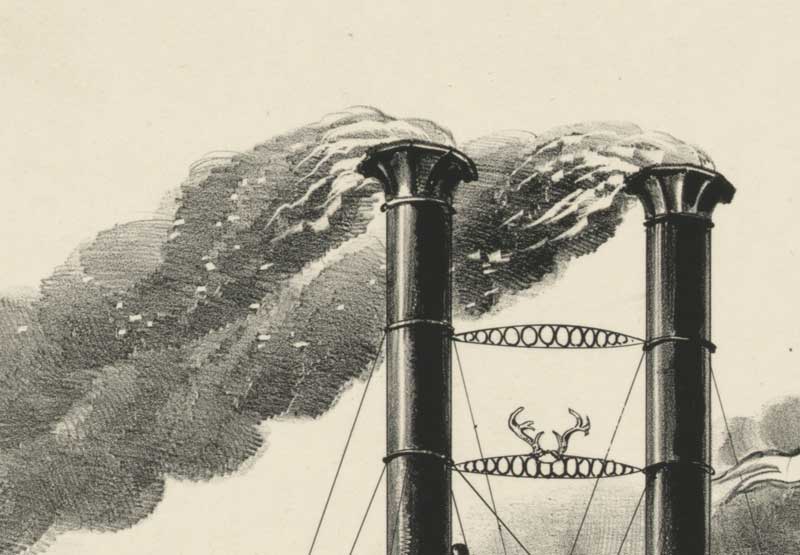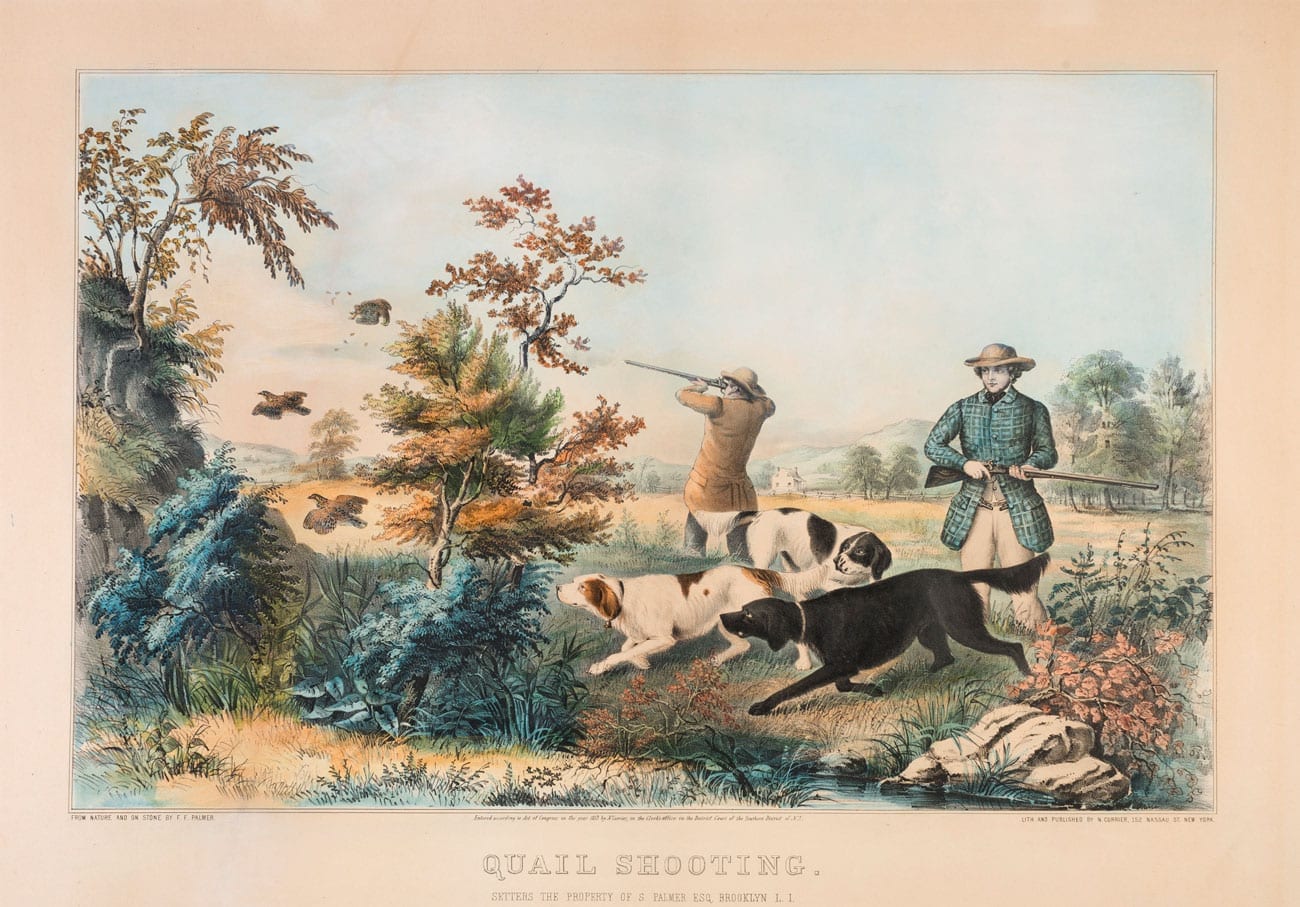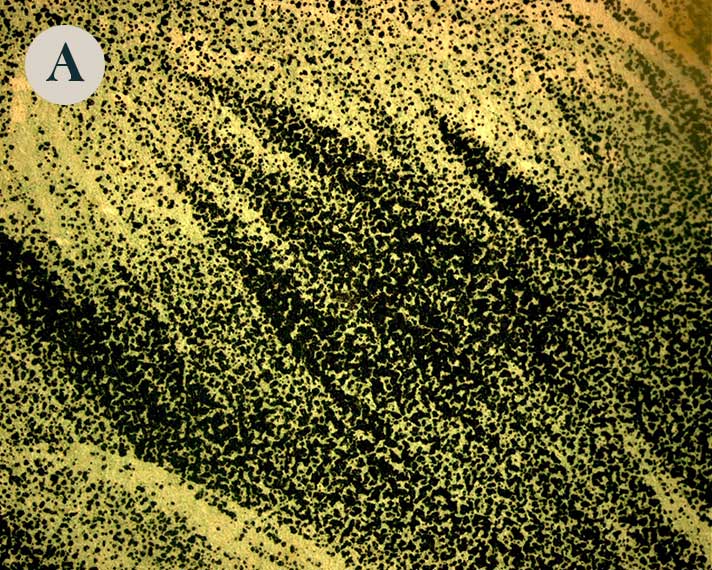The Lithographer's Tools
Louis Maurer's tools
Artists had a wide variety of tools and materials to draw their pictures and create various effects. The toolbox of Louis Maurer, the last surviving artist employed by Currier & Ives, can be seen at the American Antiquarian Society. The box includes most of the lithographic tools listed in 19th-century manuals.
The box includes most of the lithographic tools listed in 19th-century manuals. For instance, brushes were used to clean the stone before drawing; a hammer and mallet helped the artist chisel broken edges and imperfections on the stone. Scrapers, pen-knife rocker with fold-out burnisher, steel-tip lithographic pens, and crayons, held in a portcrayon, all contributed to the design.
Wooden Tool box,
Louis Maurer Collection
American Antiquarian Society, Worcester, MA.
Tools Marks
Each tool left its own particular mark, which can be seen on Currier & Ives prints.
Scraping
In Still Hunting on the Susquehanna, a print inspired by George Catlin’s Deer Hunting by Torchlight in Bark Canoes (Smithsonian American Art Museum, Washington DC), the white highlights of the picture were created by scraping away the tinted stone printed in blue.
Still Hunting on the Susquehanna
Currier & Ives, lithographers and publishers
New York, New York; undated, printed 1857–72
Two-stone lithograph printed in black and blue
Bequest of C. Porter Schutt 2000.19.29
Rubbing
Palmer used several tonal techniques for the painterly effects achieved in “Wooding Up” on the Mississippi. In addition to the pen and crayon drawing on stone, she created a complex tonal tinted stone. Starting with an all-over dark gray tone, she stopped out areas with gum arabic (the moon) in order to keep them from printing. With fabrics and mezzotint tools such as Mauer’s rocker and scrapers, she rubbed and scraped away large expanses of the stone to create the middle gray and white tones of the moonlit landscape.
“Wooding Up” on the Mississippi
Frances B. Palmer, artist
Currier & Ives, lithographers and publishers, 1863
Two-stone lithograph
Library of Congress
Scratching
In the Trout Stream, Palmer scratched through the black crayon to create very fine details using an etching needle, another tool borrowed from the intaglio toolbox.
The Trout Stream
Francis B. Palmer, artist and lithographer
Nathaniel Currier, publisher
New York, New York; 1852
Hand-colored lithograph
Bequest of C. Porter Schutt 2000.19.128
Ink vs. crayon
In a single composition, Currier & Ives artists often used both lithographic crayon and liquid tusche (ink), applied with a steel-tip pen or a fine brush. Fanny Palmer combined both to depict the black smoke (crayon) against the funnel (pen and brush) of the Queen of the West in The Champions of the Mississippi.
The Champions of the Mississippi. “A Race for the Buckhorns”
Frances B. Palmer, artist
Currier & Ives, lithographers and publishers
New York, New York; 1866
Lithograph
Library of Congress
Brush
The very finest lines in a chalk lithograph were made not with a steel pen, as one might assume, but with the single strand of a brush, seen for example in the eye of the dog of Palmer's Quail Shooting.
Quail Shooting. Setters the Property of S. Palmer Esq. Brooklyn, L.I.
Frances B. Palmer, artist and lithographer
Nathaniel Currier, publisher
New York, New York; 1852
Hand-colored lithograph
Bequest of C. Porter Schutt 2000.19.126
Crayon and tonal values
Lithographic manuals recommended different techniques to create sharp details and diffuse tonal values: the drawing of blades of grass with pointed hard crayons (A) applied with varying strength, or the use of thick ink applied with dabbers (later replaced by flat rubbers charged with stumping chalk) (B). These techniques are clearly visible in The Infant Brood, a reproduction of one of Tait’s chicks paintings also in this exhibition.
The Infant Brood
Arthur F. Tait, artist
Currier & Ives, lithographer and publisher
New York, New York, undated, printed ca. 1872
Hand-colored lithograph
Bequest of C. Porter Schutt 2000.19.66





